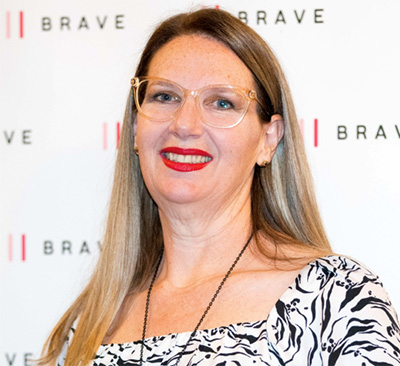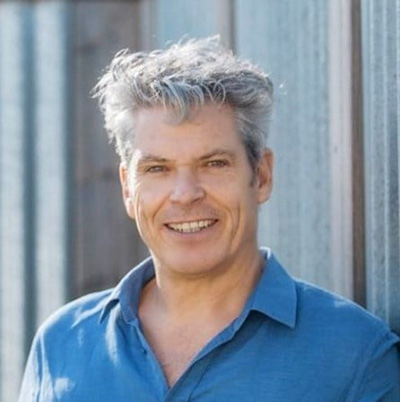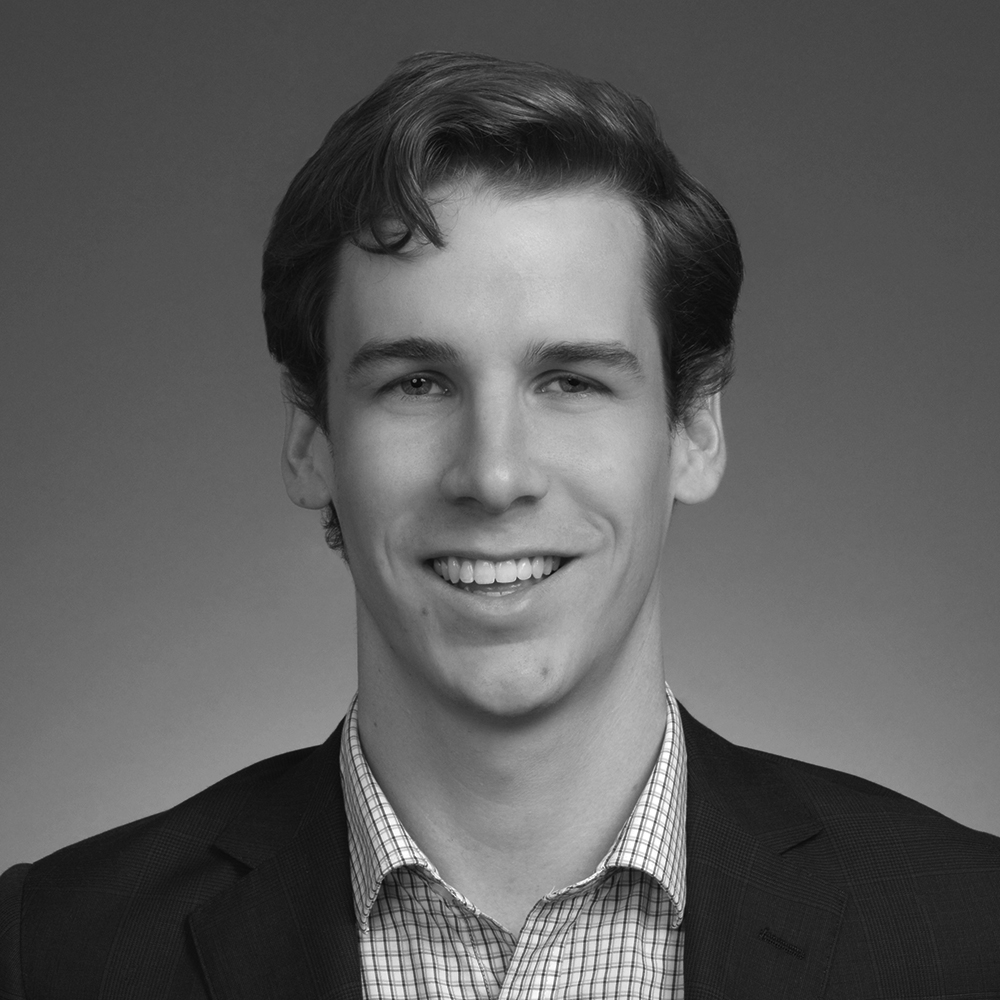
How do you plan for a founding CEO succession?
Guidance for founders, new CEOs and boards that could help smooth the transition when succession planning for a founder CEO.

- Leadership transitions from founders to new leaders can bring a new focus or direction and renewed momentum, but they can also be disruptive, challenging, and distracting.
- Having spoken to two CEOs who have succeeded founders – at the Brave Foundation and Youth Live4Life – the author identifies four themes and subsequent activities which will help make the CEO succession successful.
- These activities are shared responsibilities by founders, new CEOs and boards.
- The four themes are: organisations and what they require from leaders evolve over time, founders and their successors have unique and distinctive characteristics, CEO successions can be a period of great change and require tough conversations, and these transitions are a shift in power and need to acknowledge both formal and informal power.
Leadership transitions from founding CEOs to new leaders entail a variety of opportunities and challenges. Transitions can bring a new focus, a different direction, or an injection of momentum – but can just as easily be disruptive, challenging, and distracting. While these CEO successions are reasonably common, they often go undiscussed until it is an urgent and immediate concern.
For this article, we spoke with two CEOs that SVA Consulting has been working with at the Brave Foundation and Youth Live4Life. Both leaders have taken over the day-to-day operations of their organisations from the respective founders. The article has been developed from their insights and SVA’s 20 years experience working with growing social enterprises and not-for-profit organisations.
While the article focuses on the perspectives and experience of these new leaders, we have also identified actions for founders and boards.
The Brave Foundation
The Brave Foundation (Brave) is an Australian not-for-profit charity that equips expecting and parenting teens with resources, referral and education opportunities to facilitate happy, healthy and skilled families. Brave’s focus is on seeing future generations thrive by unlocking the boundless potential that exists within young parents. The organisation’s core activities include providing regular and ongoing mentoring to expecting and parenting teens, connecting with service providers across the country to provide advice and referrals, influencing public policy through partnerships and political engagement, and delivering an accessible online service delivery.
Bernadette Black AM founded Brave in 2009 and was its inaugural CEO, based on her lived experience as a 16-year-old mother. In 2022, Black stepped sideways into a new role at Brave as Brave’s Social Economic Ambassador, leading a new systemic advocacy department. Building on her experience, Black is working to re-envisage how we systemically meet the need of Australia’s young parents, through convening subject matter experts, whilst creating cross-departmental collaboration at both federal and state levels to build an early intervention ‘before disadvantage’ policy system.
Current CEO, Jill Roche GAICD commenced as Brave’s CEO in January 2022, having joined as chief operating officer (COO) in 2020. Roche is an accomplished executive leader and brings extensive experience with a career spanning not-for-profit organisations, management consulting, information technology, and banking and financial services.
Youth Live4Life
Youth Live4Life is a registered health promotion charity, bringing together rural and regional communities to improve youth mental health and wellbeing. Youth Live4Life works with communities to support them to implement ‘Live4Life’, a mental health and suicide prevention model specifically for rural and regional communities.
Sarah Hardy is a co-founder of the Live4Life model, and an experienced philanthropic and not-for-profit sector leader. Hardy has held leadership and senior positions in philanthropy, government, and not-for-profit organisations. In 2020, Hardy stepped down from the board of Youth Live4Life but continues to support the organisation as a key member of the Revenue (Fundraising) Sourcing Committee.
Pauline Neil is a co-founder of the Live4Life model, and has over 30 years experience working in the youth sector and local government in Melbourne and rural Victoria. Neil’s work has centred around direct support for young refugees, crisis youth support, advocacy, program design and strategic planning. Neil remains as a Director on the board of Youth Live4Life.
Current CEO, Bernard Galbally was appointed CEO of Youth Live4Life in May 2018, having previously served as a Director of Youth Live4Life. Galbally has a history of active involvement with many community organisations, in addition to experience as a Director and founder of for-profit businesses in music publishing and management.
Four observations – and how to act on them
1. Organisations and what they require from leaders evolve over time
A CEO succession is a pivotal opportunity to align an organisation’s leader to the organisation’s current needs. Often this opportunity and need arise from a natural progression of an organisation’s requirements as it grows, matures, or evolves over time. What may once have been vital to the organisation when it was first established, may no longer be as important. Equally, the organisation could have grown or changed in a way that makes initial leadership and management styles less effective. Also, new opportunities could have emerged, or changes in the sector and landscape could have occurred, that mean the organisation and its leader need to adapt.
“Taking over from a founder – particularly one who is still involved – requires a strong sense of self as a leader…”

For the Brave Foundation (Brave), the time for consideration of a new leader came after the organisation had designed and established Brave’s core program. Brave’s operations and efficiencies as a nimble, small-scale organisation had served it well – particularly through periods of funding uncertainty.
However, with funding secured for the next few years, Brave was able to turn its focus to forming scaling partnerships; building effective, robust, and scalable back-office systems; and other changes towards being a mature organisation. These were the new CEO Jill Roche’s strengths and experience and this formed a core element of the case for her stepping into the role at Brave.
“Taking over from a founder – particularly one who is still involved – requires a strong sense of self as a leader; you need to know that what you bring is right for the role, right for the organisation, and right for now.” says Roche.
At Youth Live4Life (YL4L), current CEO Bernard Galbally and the organisation experienced a similar inflection point. As of 2019, YL4L had successfully demonstrated and iterated its model in several communities and was seeking scale and growth – YL4L continues to pursue national expansion. This precipitated a need for strategic thinking, and a business-, partnership-, and stakeholder-minded leader – all capabilities that Galbally brought to the table. At the same time, with an established and proven model, YL4L had less need for leaders with clinical expertise, long-term community connections, and hands-on involvement in the day-to-day operations, which had characterised the founders’ role in the organisation.
| Founders | New Leaders | Boards |
|---|---|---|
| Work with your board to understand the parts of your strategy and plan that will go beyond your time at the organisation – the ‘non-negotiables’ to give you comfort in handing over. | Respect your founder’s legacy, but have an understanding of what you want yours to be in the future | Before any transition, ensure your board is committed to the organisation and its purpose, not just the founder |
| Equally, understand where there is flexibility and scope for the new leader’s vision. While an outgoing founder transition might give relatively more deference to an outgoing leader than a generic transition, this cannot be absolute – every transition needs a balance. | Be clear on your skills and experience that will help you take the organisation forward; focus on what is required now, not what was required in the past | Know what your founder’s long-term plans are in the role and plan accordingly |
| Prior to recruiting a new leader, understand what you need from them, and the scope of their role in setting the organisation’s strategy |
2. Founders and their successors have unique and distinctive characteristics
A new leader’s role may be different because that is what is needed for the organisation, but also because some attributes of founders may be near-impossible for another to replicate. For example, a new leader seeking to mimic a founder’s…
- organisational experience;
- program knowledge and familiarity;
- personal and professional relationships; or
- public profile, and story link to the organisation
… is taking on a potentially insurmountable task. It is vital to acknowledge that a new leader will not be a like-for-like replacement or ‘strict upgrade’ of the founder. Founders, boards, and new leaders themselves must identify and plan for the qualities that a new leader will not directly replace.
To found, lead, and deliver YL4L’s program since its inception in the Macedon Ranges in Victoria, founders Sarah Hardy and Pauline Neil applied their deep community connections, sector reputations, and clinical service expertise.
As current CEO Galbally describes it: “Our founders could walk into a room of stakeholders and lead the conversation because they were the experts, and everyone knew that they were the experts.”
Acknowledging that Galbally was a different leader, YL4L built new structures and ways of working to deliver key activities that would previously have been done by the founders, including elevating the role of existing program delivery personnel to take on leadership of community engagement activities, instituting a board sub-committee that oversees the ongoing fidelity of YL4L’s model, and – at least initially – continuing to have the founders involved in key forums and relationships.

Black had founded and grown Brave on the back of her compelling lived experience, powerful public profile, and leadership based on close relationships with every colleague and supporter. When Roche took over in 2022, she had had the luxury of two years as COO so when she was contemplating her appointment she knew how she would do the role differently. Similarly to YL4L, and with the benefit of scale-funding secured, Brave has invested in partnerships-focussed personnel, management systems, and expanded its board to access additional expertise and support from directors.
“It’s been important to me that I don’t try to replicate Bernadette’s high profile because, not only would that not be possible, but it also isn’t a model with longevity and it would set my eventual successor up for the same sort of challenge,” says Roche.
| Founders | New Leaders | Boards |
|---|---|---|
| Distil what you bring to a role and set an incoming leader up for success by supporting them to take it over, or planning for these benefits to be met elsewhere | Don’t try to emulate the founder’s role – appreciate where replication isn’t feasible and seek workarounds or alternatives | Expect the role to be different and be ready to adjust your expectations early and often |
| Work in partnership with the new leader across a handover period, with a view to building the new leader into the role | Work with the founder to distil the critical elements and plan to replace them, appreciating that the board may be the vehicle for some elements. Board continuity is important through a transition, but you may need more expertise and oversight as a result of your founder departing |
3. CEO successions can be a period of great change and require tough conversations
In any CEO succession, challenges and questions are raised that an organisation and its leaders will not face day-to-day. In the case of an outgoing founder, this may be the first time that these issues have been raised. Such queries could include:
- What is the long-term vision for the organisation? Is there agreement between the board, founding CEO and new CEO, or are there several options?
- Who makes major decisions, given that founders often have much broader decision-making influence by virtue of their history?
- How does the organisation resolve conflict or disagreement, for example between the board and CEO?
- Will funders, partners, employees, or beneficiaries look at the organisation the same way without the founder leading it? What might change?
If the board, founder, and new CEO are not aligned on the answers, challenging conversations which elicit differing beliefs and preferences may be needed.
“As we started to plan for the long-term, we were making decisions that were totally new to us…”
If these questions are not answered prior to or during a transition, they are likely some of the first that a new leader will need to clarify.
Galbally describes the transition process at YL4L as a time of rapid change, with some disruption, but one that he has appreciated the flexibility and support of the board in navigating: “As we started to plan for the long-term, we were making decisions that were totally new to us, but to the board’s credit they were totally committed as we expanded our governance structures, took on more responsibilities, and even changed our board’s composition.”
Whether before or after the transition, disruptive changes to an organisation’s activities and processes, governance, partnerships, and relationships might be needed. Having these tough conversations – ideally with everyone likely to be affected – can ensure the process is as smooth as possible.
Roche joined Brave as COO initially on sabbatical for 12 months. “After spending some time in the COO role I felt there was an opportunity for us to push even harder into difficult conversations that would help to carry us forward into the next season of Brave.
“I strongly believe that in order to be respectful to all parties it is important to address challenging matters head on, so I was deliberate about bringing things up sensitively, early and often. In the long run it has been worthwhile, but we had tough moments,” says Roche.
“Our collaboration was so strong that we were often bolting ahead and didn’t always have the board alongside at the same time…”
Acknowledging the importance of everyone being on the same page, Roche says, “There were many times when Bernadette and I were in lockstep, in fact we deliberately developed a shared leadership charter which provided the foundation for how the two of us would work together.
“Our collaboration was so strong that we were often bolting ahead and didn’t always have the board alongside at the same time – we needed to slow our roll sometimes and make sure our enthusiasm was in line with where they wanted to head.”
| Founders | New Leaders | Boards |
|---|---|---|
| Prepare for a transition to not work out exactly as you had envisioned | Raise issues early and often when you identify them – hiding them away will eventually cause problems | Do an appraisal to understand the importance and influence of your founder to key relationships, employees, partners, and funders, to ensure you can plan accordingly |
| Raise issues and be ready to respond to them | Appreciate you are making decisions within a history and context that you may not fully understand | Be ready to make new decisions and deal with new challenges. This might require external advice or an expansion of board capabilities |
| Have a clear internal process for managing conflict and disagreement, within the board and the broader organisation |
4. CEO successions are a shift in power and need to acknowledge both formal and informal power
Founders have a concentration of influence and power. This can be formal, codified power (e.g. tied to the authority of their position or recognised in the organisation’s constitution) – but can also include informal power and influence. For example, individuals (including the board) may defer to the founder’s judgement or see them as a definitive authority because of:
- Close personal relationships and trust built by the founder over time
- Their knowledge and experience of the organisation
- The importance of their support or involvement to any decision
- Their importance to funding, contracts and other important partnerships
- Their strong public profile and links to the organisation – the founder ‘is’ the organisation.
If a founder ‘leaves’, there is potential for a power vacuum to emerge due to the sudden lack of these intangible elements. An extended transition period, strong and good-practice governance, and knowledge management are all tools to manage this.
Alternatively, if a founder stays involved in some capacity – perhaps in a new role, on the board, or as an advisor – the challenge is different, and not necessarily lesser. It will be comfortable and convenient for decision-makers – including a board and a new leader – to continue deferring to the founder’s judgement. At worst, this could mean the new leader is such in name only, undermined by the founder, and without the trust of the board.
Ultimately, a successful CEO succession will empower a new leader with the agency and influence to take the organisation forward. Achieving this requires the new leader to understand and be able to influence the key drivers of decisions, acknowledging these are a mix of formal and informal power. Both Youth Live4Life and Brave have had their founders remain involved in some capacity, with both new leaders acknowledging the mix of value and complexity that this brings.
At Brave, where Black remains active as a high-profile leader, Roche says “Bernadette’s continued involvement allows us helpful and regular access to each other. At the same time, I have been deliberate about shifting Brave away from relying on its founder’s profile, and increasingly relying on the impact of its program.”
“… it was an adjustment to start making decisions in different ways, we are happy with the results.”
Both of YL4L’s co-founders, Hardy and Neil, also remain connected to the organisation. Hardy, a pivotal part of launching YL4L and particularly securing initial funding, resigned from the board at the end of 2019, but still plays a key role in funding and partnership development for YL4L. Neil remains on the YL4L board as part of a group decision-making structure. “We still hear from founding members about how happy they are with how YL4L is going, so while it was an adjustment to start making decisions in different ways, we are happy with the results,” says Galbally.
| Founders | New Leaders | Boards |
|---|---|---|
| Hold the board to account – you possess power and can use it to shift it to the new leader | Understand the drivers of decisions in the organisation, and understand how you and the board can utilise or empower them | A leadership transition will provide an acute stress-test of your governance structures and processes. It is vital to optimise your governance decision-making |
| If you are leaving, Understand the drivers of decisions and work with the organisation and new leader to ensure they will remain in some capacity in your absence | Transitions shift your relationship with the organisation’s leader, but also disrupt your employees’ connection with their leader; have a plan for this | |
| If you are staying involved, – Appreciate that your role will be different, and this might mean giving up things you are accustomed to – If you are simply ‘ornamental’ it is perhaps time to step away – Acknowledge your influence and be explicit about how this needs to change or shift elsewhere – Consider a leadership charter or MOU that captures an understanding of what your role will be |
To explore this common but often uncharted topic, this article has discussed four ideas important in succession planning from a founder to a new leader:
- Organisations and what they require from leaders evolve over time
- Founders and their successors have unique and distinctive characteristics
- CEO successions can be a period of great change and require tough conversations
- CEO successions a shift in power and need to acknowledge both formal and informal power.
These four ideas – and how they are represented by our two case studies Brave and Youth Live4Life – make clear that successful CEO successions are a shared responsibility by founders, new leaders, and boards. This topic often doesn’t get talked about until too late, so if you are one of these parties, and/or you are considering a transition, perhaps this article can be the conversation starter that you need.
Notes: organisation and biographical information extracted from organisation websites and re-used with permission.






